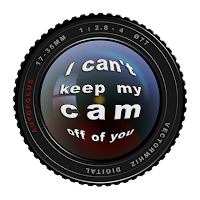What you read here does not exist. In the sense that it is not directly palpable or detectable with our biological human sensors. To actually experience it, we need 'translator devices' like computer monitor screens, televisions or speakers to allow our sensors to pick up signals that they send to our brain in the form of electromagnetic pulses with which we form images that exist in an imaginary virtual world only. The range of impulses that human sensors are able to detect, are marked by an upper and lower frequency, beyond which we are unable to notice whatever is emitting or reflecting those out-of-reach frequencies.
But the fact that our sensors are unable to detect them, does not mean that they do not exist. Oh by the way, anything that is detectable we call reality - the renown seeing is believing cliché - and anything outside of the range of frequencies that make up visible light or audible frequencies, requires specific knowledge to accept that they exist, even though they are invisible or inaudible. We can't hear, see, touch or smell radio- or TV-signals, WiFi frequencies etc. but because we have been told that they exist, we believe that even if our biological sensors are incapable to detecting them. We can see the impulses they transfer on screens or hear them through speakers. But because our sensors do not notice them without the assistance of auxiliary devices, we say that they exist in the virtual world.
 |
| The fourth eye |
There is no Internet without monitors and speakers, like there are no games without them. We can not video call or vid-chat without our smartphones or webcams. Conference calls are not possible without specialized equipment. But we can also use devices to remote control drones to observe properties of agricultural areas (with infra-red scanners) or bomb the enemy.... The virtual world can be used to observe or direct events in the 'real' world. Does that mean that the limitations of our sensory ability just determine what is virtual and what is real and that there actually is no border between these dimensions inside our dimension? Is this an error of judgement caused by poor or incomplete information?
So apparently the measure and nature of the knowledge that we possess, determines what label we stick on things. But fragments of information - the building blocks of knowledge - are what they are; they can be true or false. This can mean that one and the same event, entity or thought can be qualified as true by one person and be labeled as false by an other. It is knowledge that determines our perception. Professor David Bohm already said this is the case long ago: Human knowledge is a perceptional enterprise.
If something is perceived to be real by one person and not real by an other their perception is not reconcilable, because they believe distinguished information to be true or false. But I suspect nature not to perceive matters in such a way, because it actually exactly knows the difference between true and false information. It seems to me that this is a mandatory condition to create anything at all. In other words, nature does not know virtual worlds, for that is the result of the limited ability to detect of human biological sensors and the possibility to manipulate the settings of artificial sensors and monitors. A person's perception depends on what information (s)he was offered, regardless of the fact if it is true or false, while nature is the source of all information. Entities within nature's domain (some of them) just distort information for unnatural purposes.
Anyway, this is how I perceive things to be.
Hasta luego virtual online folks.

No comments:
Post a Comment